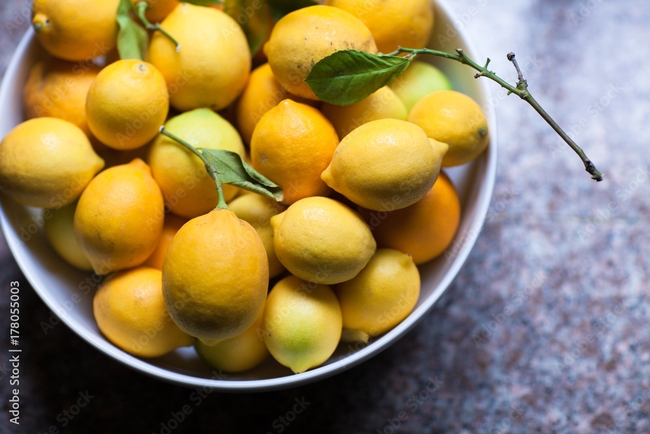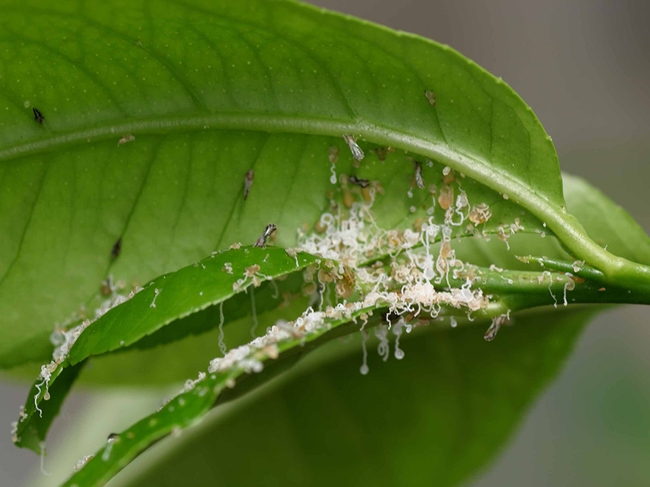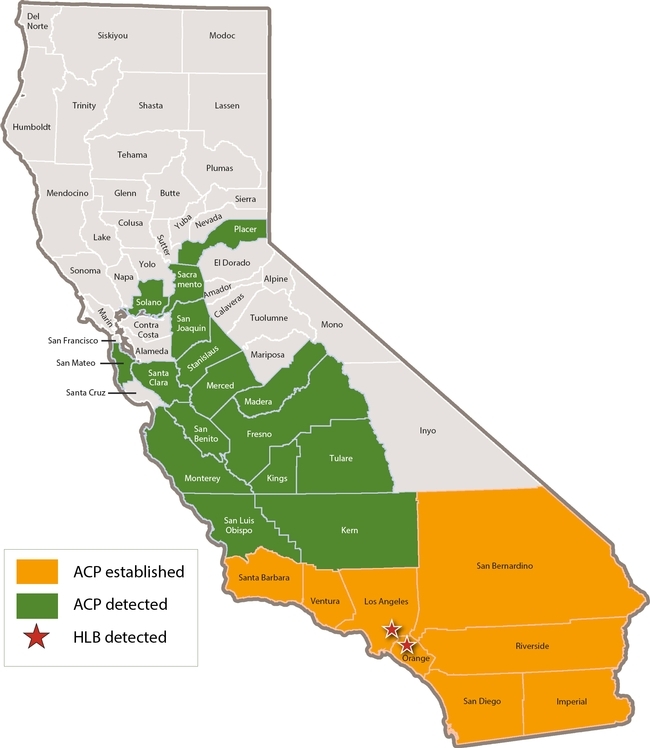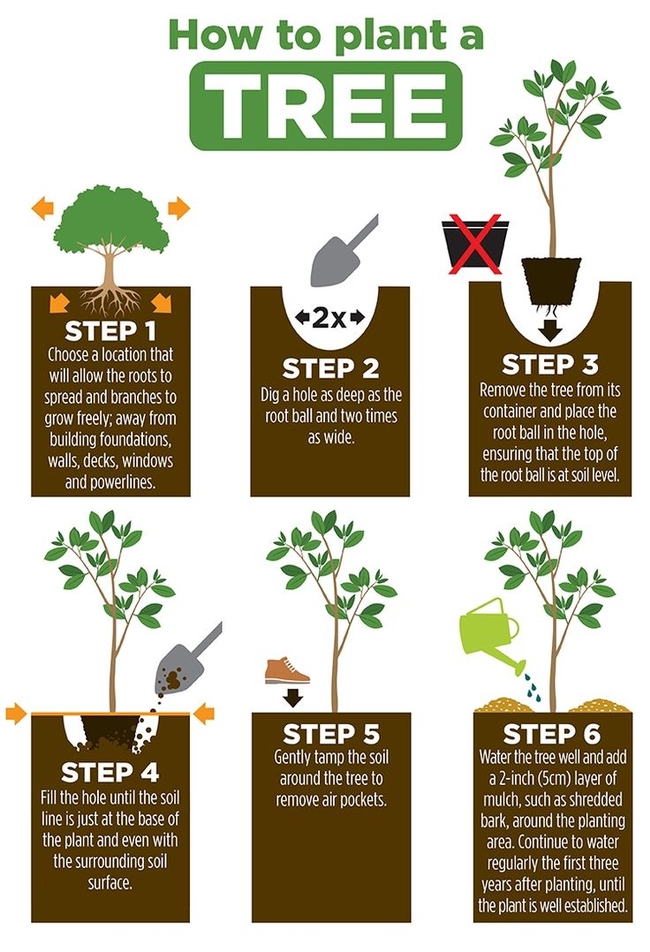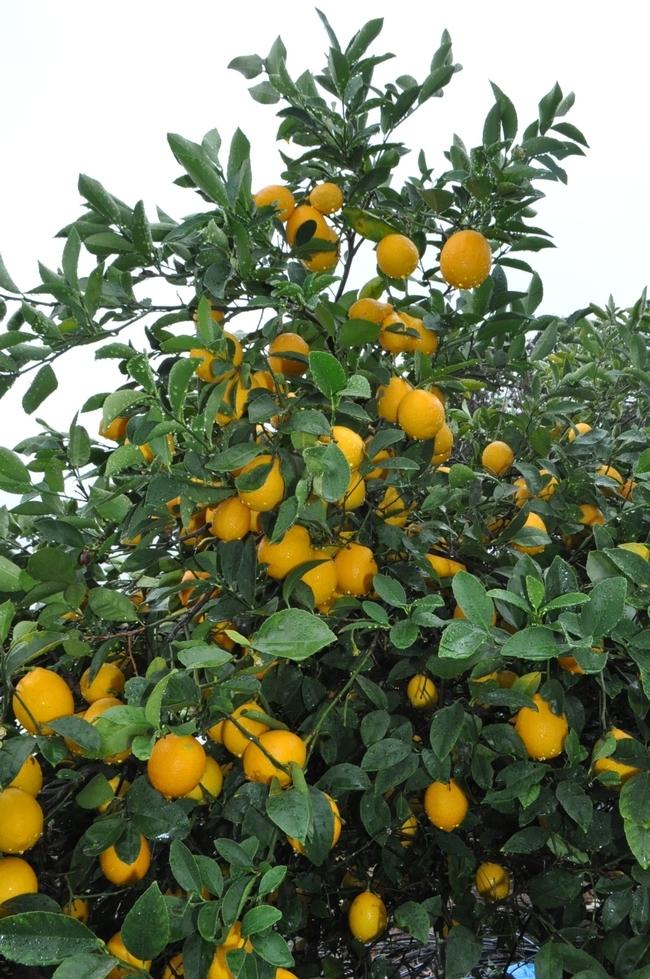By Cindy Watter, UC Master Gardener of Napa County
One day recently, while I was standing in my yard, a passerby asked me if the lemons on my tree were real. The gentleman was a tourist, and he doesn't see lemons adorning trees in January in Minnesota. I gave him a couple of lemons and told him to put them in his tea back at the hotel.
Mine is a Meyer lemon tree. This variety is found all over Napa, if you look. Meyers put out flowers year round but are especially fruitful in late winter and early spring.
I love the taste of Meyer lemons. They have a floral flavor and aren't as sharply acidic as Eureka lemons, the common supermarket variety.
Frank Meyer, who worked for the U.S. Department of Agriculture, imported the Meyer lemon from China to California in 1908. The plant is probably a hybrid of orange and lemon. It was intended as an ornamental tree, as it is very attractive and grows well in containers.
The Meyer lemon became popular because it is resistant to extremes of temperature, is relatively easy to grow, and the fruit is tasty. However, it has never caught on as a commercial crop beyond local markets because the thin-skinned Meyer doesn't handle storage and shipping well. I think access to Meyer lemons is a good reason to remain in California.
That 1908 casual crossing of international borders with plants would not be possible today. In fact, parts of some counties in southern California are under federal quarantine order because of citrus diseases that are highly contagious. Sections of Los Angeles, San Diego, Santa Barbara, Riverside and Orange Counties can't allow their citrus to cross the county line.
One particularly virulent citrus disease is caused by the Huanglongbing bacterium (Candidatus liberibacter asiaticus), which is spread by a psyllid, a tiny insect. The disease first appeared in Florida and has affected most of the citrus crops there. The psyllid, or vector, was seen in southern California in 2008. Huanglongbing disease came four years later.
When HLB strikes, the citrus leaves are mottled, the fruit is shrunken and discolored and the seeds are killed. It is devastating for commercial growers.
Research on how to fight HLB is ongoing, but the current treatmen is to put all trees under screenhouses and use insecticides on the psyllid. Interestingly, the first Meyer lemons were symptomless carriers of the tristeza virus. Because of this, the variety is banned in some citrus-producing areas. However, breeders have now given us the Improved Meyer lemon and virus-free clones.
HLB is a serious threat to a major part of California's agricultural economy. For this reason, you should only buy citrus trees, rootstock and budwood for grafting from reputable nurseries and university programs.
HLB was discovered in California on a grafted pomelo tree. Just say no to your friend from Santa Barbara who offers you budwood from her backyard. Don't even consider purchasing those tantalizing trees for sale by the side of the road down south. Planting them is too risky.
Spring and fall are the best times for planting citrus trees. Once you have your Improved Meyer lemon tree from a reputable source, planting is not difficult. Identify your yard's warmest area. Dig a hole as deep as the root ball and twice as wide so the roots can spread and form a sturdy base. University of California advisors do not recommend adding amendments to the soil unless it is almost pure clay.
If your tree comes in a plastic sleeve, lower the tree into the hole and cut the sleeve vertically to remove it. (Recycle it, of course). Pat the soil around the roots. Don't pack it in, but don't leave big air holes, either. If you cover the top of the root ball, use sand or sawdust so water will pass through rapidly.
Citrus trees have many shallow roots, so you shouldn't disturb the soil around them. Water the tree immediately after planting. Keep the root ball moist but not soggy until the roots grow into the surrounding soil.
Citrus trees like nitrogen fertilizer, but don't apply it until after the last spring frost Do not fertilize after the summer, as you don't want to encourage tender new growth in the fall.
Citrus trees are both beautiful and functional, and they can add value to your landscape. They are attractive all year round, with their shiny green leaves, fragrant blossoms and, of course, their fruit. They attract pollinators, too, so they benefit the environment.
The University of California at Riverside College of Natural and Agricultural Sciences website is a wonderful source of information and advice about citrus. The UCR Citrus Experiment Station, founded in 1908, is a tourist attraction today.
Read about the most promising research for treatment of HLB, from UC Riverside:
Got Garden Questions? Contact our Help Desk. The team is working remotely so please submit your questions through our diagnosis form, sending any photos to mastergardeners@countyofnapa.org or leave a detailed message at 707- 253-4143. A Master Gardener will get back to you by phone or email.
For more information visit https://napamg.ucanr.edu or find us on Facebook or Instagram, UC Master Gardeners of Napa County.
Attached Images:
